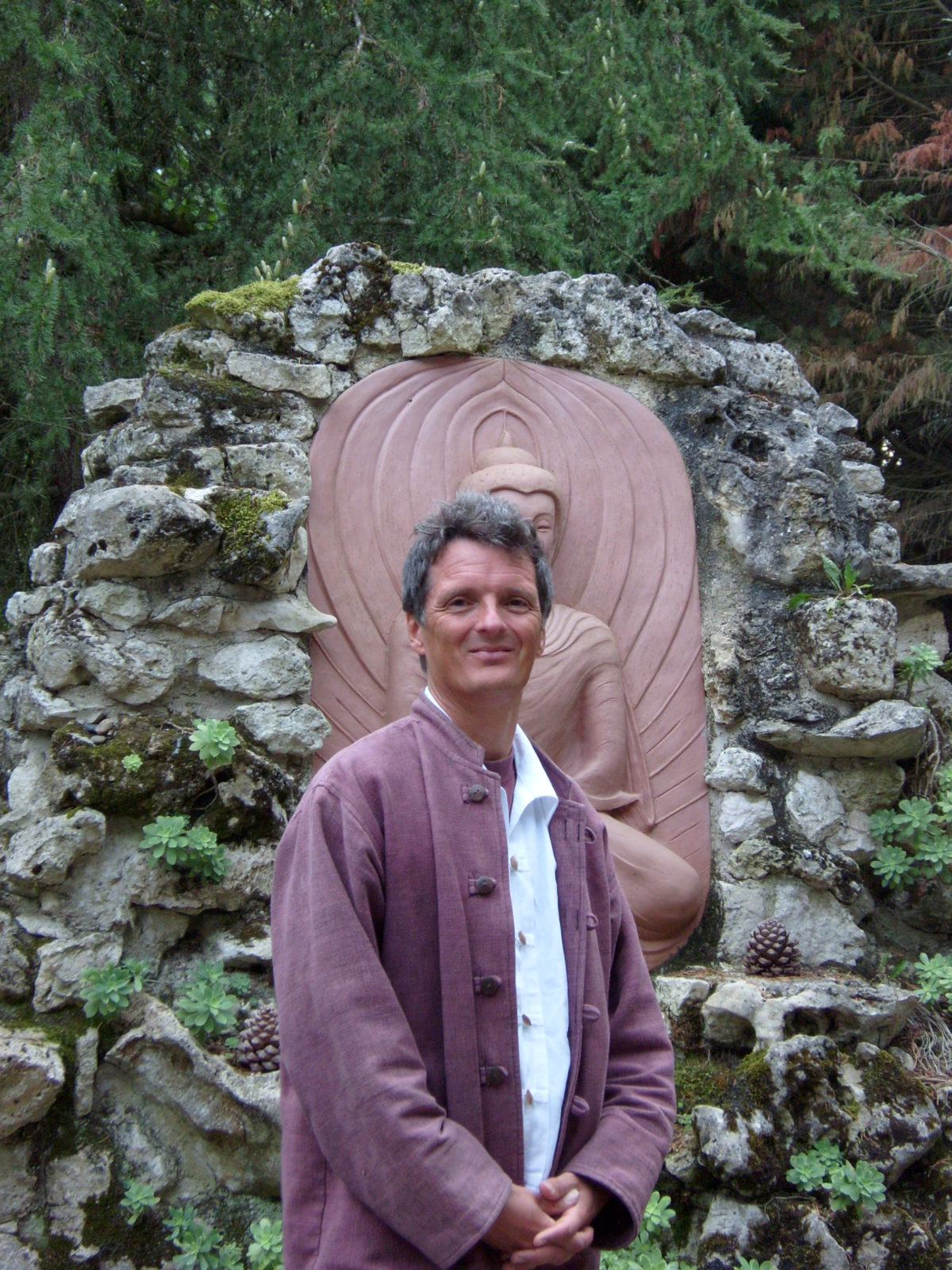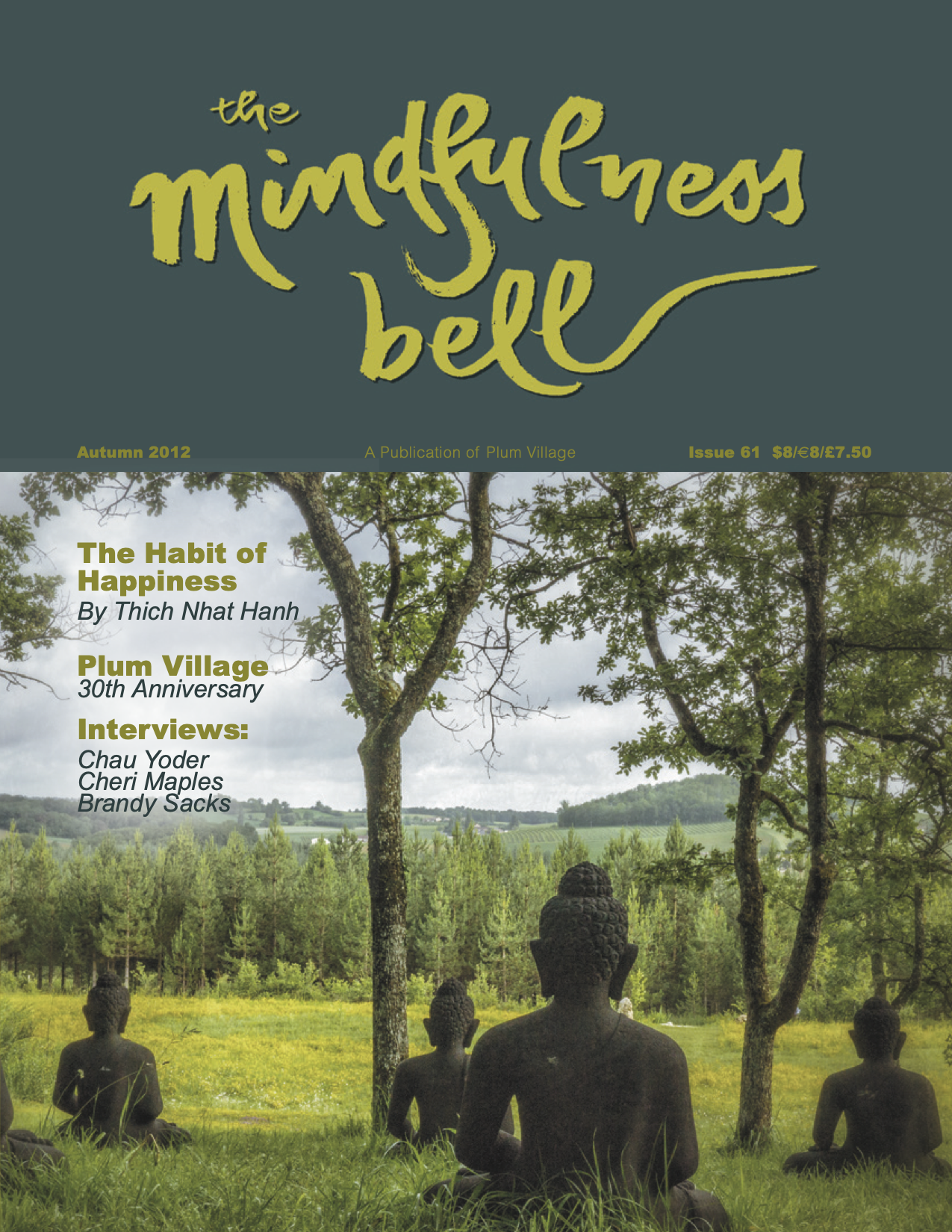How the Insights of Neuroscience Can Aid Our Practice
By Paul Tingen

Around twenty-five years ago, neuroscience went through a dramatic change in perspective that had profound implications for mindfulness practitioners, and that can greatly deepen our understanding of our practice and the teachings of Thich Nhat Hanh. To be able to describe neuroscience’s big discovery, first some basic facts: the brain is astoundingly complex,
How the Insights of Neuroscience Can Aid Our Practice
By Paul Tingen

Around twenty-five years ago, neuroscience went through a dramatic change in perspective that had profound implications for mindfulness practitioners, and that can greatly deepen our understanding of our practice and the teachings of Thich Nhat Hanh. To be able to describe neuroscience’s big discovery, first some basic facts: the brain is astoundingly complex, typically containing some 100 billion nerve cells called neurons. Each neuron is capable of making thousands, sometimes hundreds of thousands, of connections with other neurons using chemicals called neurotransmitters that transmit electrical signals along complex cellular pathways. “Thoughts, memories, emotions—all emerge from the electrochemical interactions of neurons,” writes Nicholas Carr in his book, The Shallows: What the Internet Is Doing to Our Brains.(1)
Until the 1980s, conventional wisdom in neuroscience held that the brain developed during childhood until it reached a fixed form that remained the same during adulthood. This belief in the brain’s static cellular circuitry gave rise to a very limited view of human consciousness, a “neurological nihilism,” in which consciousness was seen as no more than the byproduct of these fixed pathways. With the emergence of the computer, the analogy was made that the hardware of the brain determined and limited the software (our feelings and our thoughts).
However, due to pioneering research in the 1980s, most famously by Professor Michael Merzenich,(2) this orthodoxy was turned on its head. Since then it has become widely accepted that the brain constantly rewires itself in response to changes in our feelings, thoughts, experiences, and the way we use our body. This phenomenon is referred to as the plasticity of the brain. In computer language, the software and the hardware inter-are: the software can shape the hardware, just as much as the other way around. Neuroscience today is governed by what is known as Hebb’s rule: “Cells that fire together wire together.” The brain gets less plastic as we grow older, but the capacity for rewiring remains.
The idea of neuroplasticity has given new hope to people with physical, emotional, and mental impairments that had hitherto been regarded as unchangeable. Conversely, just as it is possible for the software to change the hardware for the better, it can also change the hardware for the worse. Moreover, in Carr’s words, “plastic does not mean elastic.” Neural pathways become entrenched, and the more entrenched they become, the more they resist the process of rewiring. The older, entrenched pathways are paths of least resistance amongst which neurons like to communicate with each other, propelling us to keep repeating similar feelings, thoughts, and actions. Every time we use a particular pathway, it increases the likelihood that we will do it again.
Says Carr, “The more a sufferer concentrates on his symptoms, the deeper those symptoms are etched into his neural circuits. In the worst cases, the mind essentially trains itself to be sick.” In short, whenever we’re stuck in habitual suffering, we’re not just wasting our life energy and time, we’re actively entrenching this suffering in our neurological pathways, making it more likely that we’ll suffer in the same way again. Suffering is not a free ride.
Rewiring for Well-being
There are many parallels between these theories of neuroscience and Thay’s teachings. The essence of our Buddhist practice is to use mindfulness to develop singularity of thought (concentration/samadhi), which can help us to get out of habitual thinking and feeling and help us to stop triggering our habitual neural pathways of suffering. Mindfulness, in effect, allows us to consciously rewire our brain for improved well-being.
Mindfulness is intentional and based on our free will. Free will can be applied in many ways. An athlete or musician will construct neural pathways in his or her brain through endless deliberate practice. However, the practice of an athlete or musician will rarely be self-aware, and while it may push pathways of suffering out of sight, it won’t transform them. Mindfulness may be the only state of mind that is wholly deliberate and wholly self-aware, and that is able to embrace other states of mind, transform them, and foster well-being, thereby allowing us to consciously rewire our brain.
The way we use the mantra, “This is a happy moment,” is a good example. We train the brain to create and deepen a neural pathway of well-being that might not otherwise be there. Conversely, if we focus on the negative, we keep firing and strengthening the neural pathways associated with our suffering. We know that certain ways of expressing our suffering can make us feel lighter and freer, while others appear to deepen it. One main reason for the difference between “rehearsing” suffering and transforming it lies in whether we embrace our suffering with mindfulness or not. Another factor is whether we look at our suffering with Right View; wrong views trigger the very thoughts that cause and entrench our suffering. If we don’t embrace suffering with mindfulness and with Right View, we will almost inevitably be caught in habitual suffering. But if we embrace our suffering with Right View and mindfulness, and stop the thoughts that trigger it, we can transform the energy of our suffering so that it becomes available for our well-being. The light of mindfulness cooks the raw potatoes, so they become a joy to eat.
Thay has always disagreed with a widespread view in Western society that we can get rid of unpleasant feelings, particularly anger, simply through expressing them. He often warns against the danger of rehearsing these feelings. Neuroplasticity shows us that repeatedly firing off our neurological pathways indeed risks strengthening those very pathways. And so, again contrary to a lot of Western thinking, Thay has long recommended that people who come to Plum Village don’t immediately start digging into their suffering, but instead begin with watering their seeds of well-being. Once we are stable and our sense of well-being is strong enough, we can look at our suffering again and have a chance to transform it, rather than risk being overwhelmed by it.
Our Sun of Mindfulness
To describe these processes more clearly, I would like to build on Thay’s analogy of our practice as that of a gardener. A gardener transforms compost (the mud) into flowers (the lotus). A skillful gardener knows how to create a pleasant garden with lots of flowers and just enough compost to feed them. Being a skillful gardener of our own inner garden is our spiritual work of self-love. To offer another analogy: neural pathways can be described as a collection of gullies, brooks, canals, and canyons; our feelings and thoughts can be considered the water in them. Mindfulness has often been described as a light, and in this case we could extend the analogy by describing mindfulness as the sun.
And so, it rains and a rivulet forms: the first arrow has hit and we suffer. The Buddha’s teachings tell us this is unavoidable; life will fire us arrows. Suffering is inevitable. But if we don’t handle this arrow correctly, if we add other arrows to it with wrong thinking, the rivulet turns into a stream, a river, and eventually a flood of suffering. The one neural connection has turned into a pathway and is likely to join with other similar pathways, and all of them may be deepened. As these neural pathways are strengthened, so are the corresponding mental formations, and they will be more difficult to transform. And once this gully or canal or canyon has formed, new rain will be drawn to it, deepening these pathways still further.
There is a belief in Western culture that we have to go through our suffering (the dark night of the soul), but from the perspective of neuroplasticity and our practice, we cannot transform our suffering from inside our suffering. We cannot affect the course of a canal while being caught in the stream. We cannot dissolve neural pathways while firing them simultaneously. There is no way to happiness; happiness is the way. We have to step out of the stream and shine our sun of mindfulness on it. Only with the healthy parts of ourselves can we heal our afflictions.
When we’re suffering, streams (or storms) of thoughts and feelings run through us; and when we manage to breathe and become mindful, these streams calm down to a gentle trickle. As the water slows down, as the storm abates to a gentle breeze, the neurons stop firing together, and we no longer strengthen our neural pathway of suffering. The suffering, the neural pathway, may still be there, but it is no longer a danger to us. It is like the mother embracing her angry child: she holds him firmly, so he can do no damage, and also lovingly, so he can come back to his true self. At that point, the water can mingle with the earth and turn into mud, or it can evaporate in the light of the sun of our mindfulness and fall down as rain (our tears) somewhere else in our garden. In both cases, the water will help grow flowers rather than deepen the pathway of suffering.
When we consider this analogy, it’s easy to see why Thay so often stresses that we should not judge or suppress our suffering. In seeing our suffering as water flowing through a canal, we realize that we need that water to tend our garden. If handled unskillfully, the water can deepen the groove of our suffering; if we know how to practice, we can use it to grow flowers in our garden. The analogy can be extended yet further. Sometimes our suffering has become frozen, hidden, inaccessible: we may have become bitter or repressed our feelings. One can’t grow flowers with ice, so we have to first melt our frozen feelings.
Mindfulness practice in general, and sitting meditation in particular, are ways of strengthening the power of the sun of our mindfulness, or the power of our concentration (samadhi). But sometimes, if our sun of mindfulness isn’t strong enough to transform our suffering, we need the compassionate and mindful presence of another person. As the water starts to flow, we cry, and we begin to disarm and transform our suffering with our collective mindfulness. This is one of several reasons why practicing in a Sangha is so important. Neuroscience offers an additional reason, emanating from its research of a particular class of neurons called mirror neurons, which are triggered when we observe the actions and/or feelings of others, and which then fire in corresponding ways. Neuroscientists have argued that mirror neurons make empathy possible; and even simply being in the company of other practitioners will trigger mirror neurons that strengthen our own practice.
What Thay calls our store consciousness can be seen as the network of neural pathways in our brain, much of it inherited from our ancestors, with each seed corresponding to a neural pathway. Intense feelings, addictions, and many of the noxious things we consume in our society can strengthen our neural pathways of suffering (hence the importance of the Fifth Mindfulness Training). By contrast, the calming nature of our entire practice makes it easier to rewire our brain. There are no magic formulas or strategies; the crucial point is that we need to be very mindful, at all times, of whether we’re transforming our suffering or merely rehearsing it.
Living lightly offers more freedom and clarity to practitioners and also makes it possible to turn neutral feelings into pleasant ones—in other words, to turn neutral and often forgotten neural pathways into pathways that trigger well-being. It is, so to speak, far easier to cultivate flowers in the gently rolling hills of Plum Village than in the steep crags of the Grand Canyon.
© 2012, Paul Tingen
1) All quotations, unless otherwise indicated, are from the book The Shallows: What the Internet Is Doing to Our Brains by Nicholas Carr (New York: Norton, 2010), which has been credited with giving one of the best descriptions of the concept of neuroplasticity available. The thesis of Carr’s book is that extensive use of the Internet rewires our brains to make it more difficult for us to handle deep thoughts and extended narratives. Some of Carr’s sources on neuroplasticity are:
* Pascual-Leone, A. Amedi, F. Fregni, and L.B. Merabet, “The Plastic Human Brain Cortex,” Annual Review of Neuroscience, 28 (2005). * Michael Greenberg, “Just Remember This,” New York Review of Books, December 4, 2008. * Norman Doidge, The Brain That Changes Itself: Stories of Personal Triumph from the Frontiers of Science (New York: Penguin, 2007). * Jeffrey Schwartz and Sharon Begley, The Mind and the Brain: Neuroplasticity and the Power of Mental Force (Harper-Perrenial, 2002).
2) Carr, pages 24-26.

Paul “Ramon” Tingen, True Harmony of Loving Kindness, is an anglicised Dutchman who now lives in France, near Plum Village. Paul writes for music technology magazines and is the author of a book about the electric music of Miles Davis entitled Miles Beyond. Paul has recorded one CD, May the Road Rise to Meet You, and is currently recording a second album titled Metamorphosis. He ordained as an OI member in 1997. His website is www.tingen.org.

